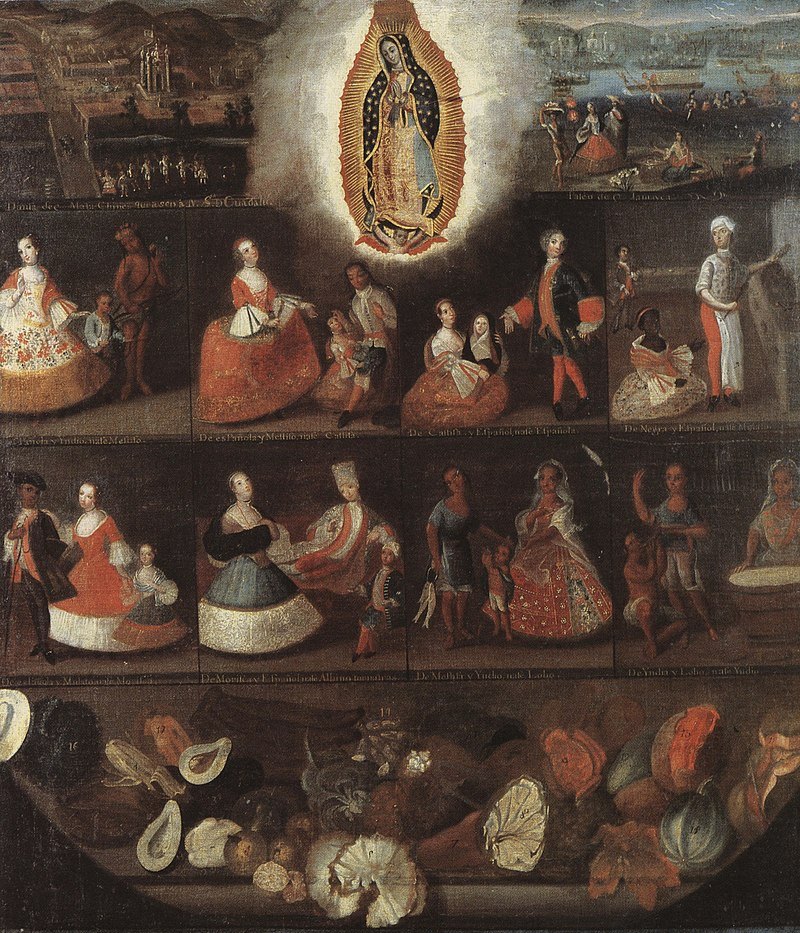For over a century the most popular souvenirs from Mexico were a series of paintings depicting racially mixed families and how they were genetically formed among the Spaniards, indigenous and Africans. This compelling and unique pictorial genre is known as caste (or casta) paintings created during the 1700s whose recent popularity has heightened interest in Inquisition-era Mexico.
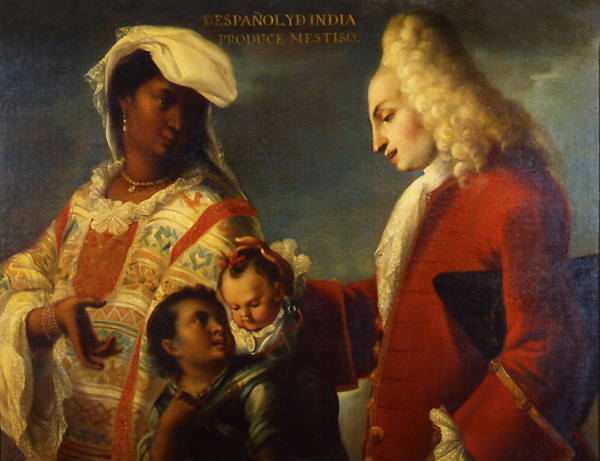
Caste paintings reminded both colonial subjects and the Spanish Crown that Mexico was still an ordered, hierarchical society in which each group occupied a specific socioeconomic niche defined largely by race. Basically, the lighter your skin tones the higher up on the scale you were with corresponding economic and educational opportunities. These codifying paintings formed the identity in Mexico during the entire eighteenth century.
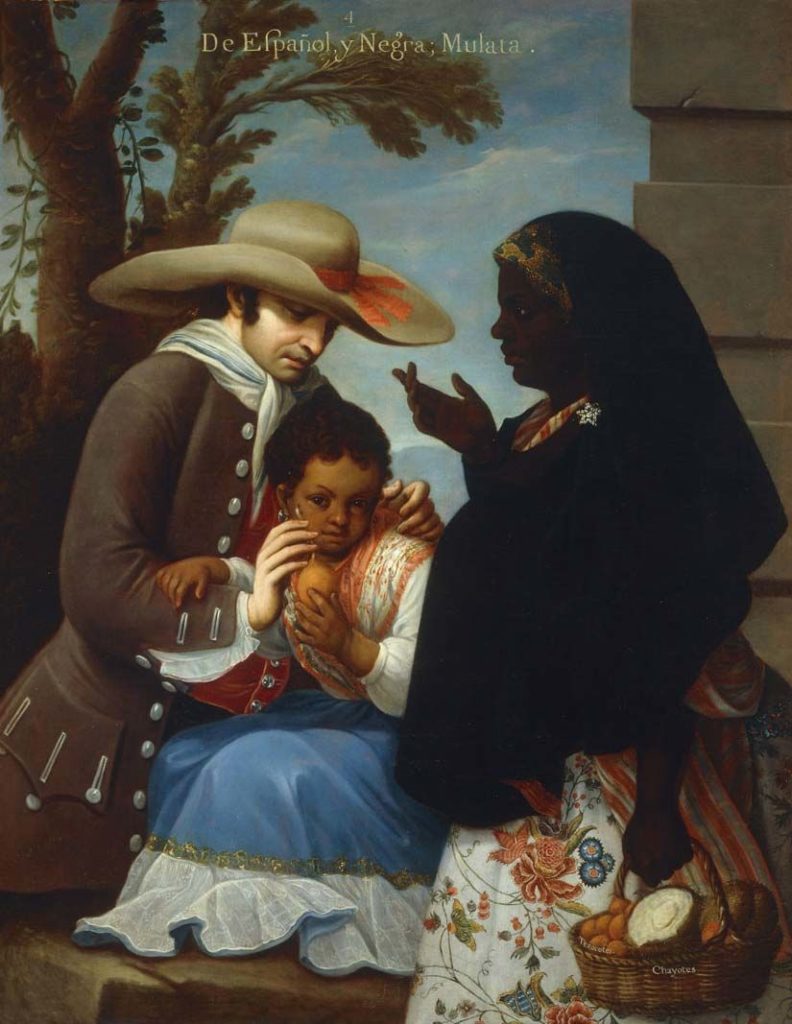
Most caste paintings comprise sixteen scenes depicted on separate canvases. Some sets feature fourteen, others nineteen or even twenty. These numerical differences point to the impossibility of definitively categorizing the racially mixed. Occasionally the scenes are represented on a single, compartmentalized surface with Guadalupe at the top as the mother of Mexico.
Each scene portrays a man and woman of different races with one of their progeny and is accompanied by an inscription that identifies the racial mix depicted. Three subjects are important as it reminded the viewer of the Holy Family (St. Joseph, Mary and Jesus).
At the beginning are scenes portraying figures of light skinned Spaniards lavishly attired and engaged in recreation indicating their higher status. As the family groups become more racially mixed, their social status diminishes though they are still portrayed as contributing members of Mexican society as merchants or tradesmen.
Caste paintings also include rich visual illustrations of food and flora clearly positioned to represent Mexico’s natural abundance plus access to Asian imports and the heights of colonial fashion and interior design.
While intermarriage among the native, Europeans and Africans did not become common until the second half of the seventeenth century, sexual contact among groups occurred from the get go. Herman Cortez chose an indigenous woman as is translator/lover providing him a son, the first mixed race baby in Mexico.
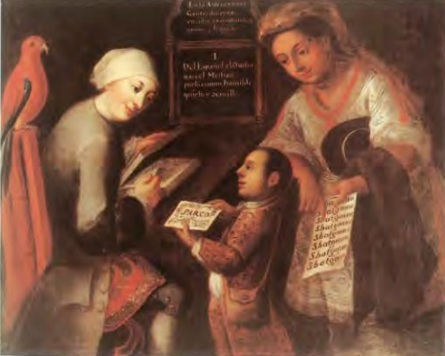
Intermarriages resulted in the growth of a large group of racially-mixed people known collectively as castes. Castes was the general term used by Spaniards and creoles (Spaniards born in the Americas) to distinguish themselves from the large masses of racially-mixed people.
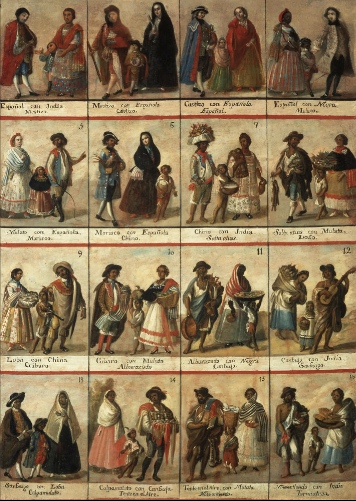
By the end of the eighteenth century, approximately one quarter of the total population of Mexico was racially mixed. From the sixteenth century on a variety of names served to designate the different castes in Mexico. The most widely used terms were those referring to the mixtures: mestizo (Spanish-Indian), mulatto (Spanish-Black), and a whole array of fanciful terms had been devised to refer to the different castes and their offspring. Several documents record these officially designed classifications, which include zoologically inspired terms such as wolf, as well as names alluding to the racial mixtures, including ‘hold yourself in mid-air’ and ‘I don’t understand you’.
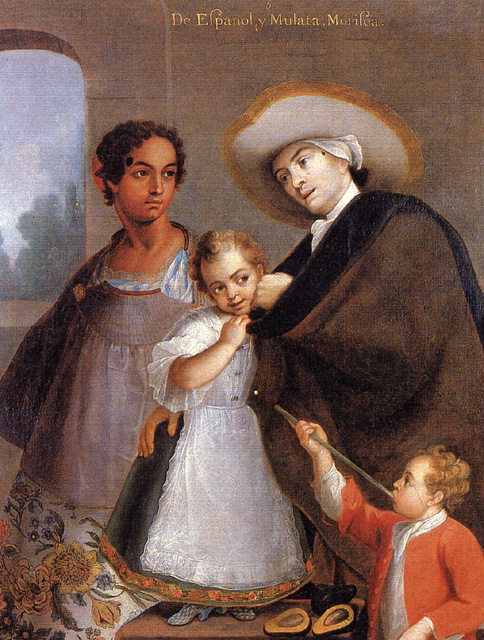
Paintings were considered scientific studies of race and displayed in Colonial era Europe in science, rather than art, museums. One’s race was so important it was listed on everyone’s baptismal certificate, the equivalent of one’s Social Security card today. When a couple brought their baby to be baptized often they were illiterate and didn’t know their last name, so the form might list Juana, the mulatto, and Jose, the Creole, baptized their son, Pedro, the Castizo. ,
The emergence of caste painting is in part related to the elite’s anxiety regarding the fallibility of this imperial order. For the colonial elite, the classes described in caste painting were a way of creating order out of an increasingly confusing society. Early examples of caste painting were intended as reminders to the Spanish Crown that Mexico was still a rigidly structured society. Moreover, the placement of Spaniards at the beginning of these classifications underscored the fact that Spaniards presided over society.
Caste paintings convey the perception that the more European/white you were the closer to the top of the social and racial hierarchy you belong. Pure-blooded Spaniards always occupy the preeminent position in caste paintings and are the best dressed and most civilized.
Commissioned by Viceroys, or the stand-in for the Spanish king in Mexico, they brought caste paintings to Spain upon their return as souvenirs. Some two thousand paintings are known to have been made that now sell at auctions for often over one million dollars each.
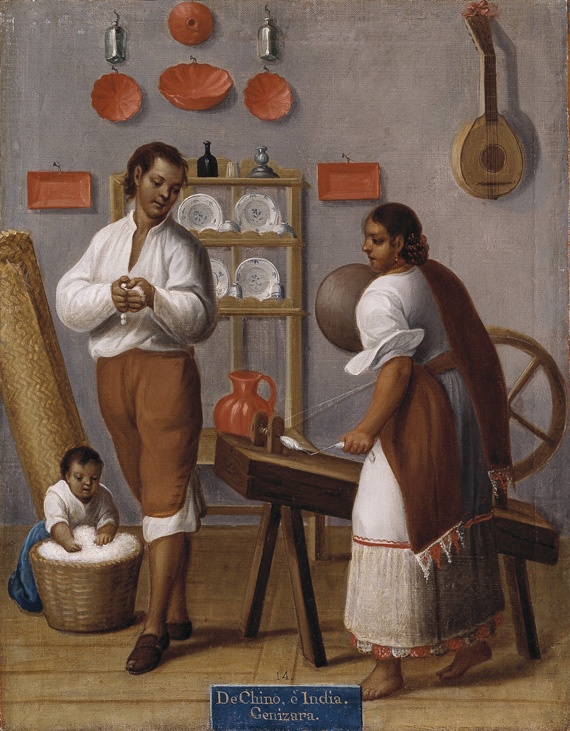
The paintings ceased to be produced following Mexico’s independence in 1821 when caste designations were abolished, theoretically, with the expulsion of Spain.
While caste paintings should be viewed for their artistic merits they explain, in part, the origin of racial thought in the early modern world, which still impacts society today. Watch any telenova and notice the light-skinned heroes and heroines battle the darker toned villains. Or gambol in most antique stores in town to find paintings or furniture depicting the castes.
by Joseph Toone
- TripAdvisor’s top tour guide in San Miguel de Allende with History and Culture Walking Tours and Joseph Toone Tours.
- Amazon’s best selling author of the San Miguel de Allende’s Secrets book series on history, holidays, tours and living in San Migu
DISCLAIMER: The opinions expressed hereby are those of the author and not necessarily those of the San Miguel Times.

